Nike v Adidas: The battle of the football kit makers
- Published
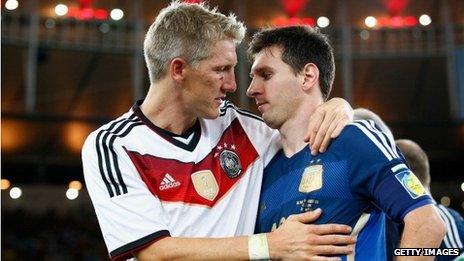
Adidas-sponsored Germany beat Adidas-sponsored Argentina in the 2014 World Cup final. But is this domination in the sport's showpiece event a true reflection of what's going on in the football kit market?
The simple answer, if you look at Europe's five big leagues - Germany's Bundesliga, Spain's La Liga, France's Ligue 1, England's Premier League and Italy's Serie A - is a clear no.
On the face of it Nike seems to be winning the battle - but only just.
The American sportswear giant has overtaken Germany's Adidas, external as the market leader for the first time since the 2009-10 season. Nike now supplies shirts for 26 clubs compared with Adidas's 18, while third-placed Puma supplies just nine.
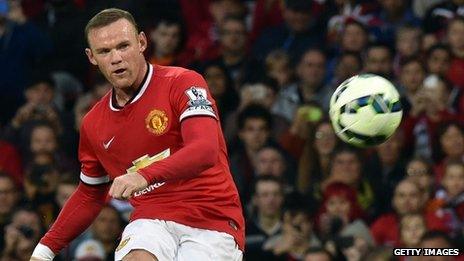
This season will be Manchester United's last with Nike
But Adidas is fighting back, having signed two of Nike's biggest clients - a whopping £750m 10-year deal with Manchester United starting from next season, and a 140m-euro (£112m) deal with Italian champions Juventus, external starting from 2015-16.
Quality over quantity
The big five leagues in Europe were responsible for sales of more than 13 million shirts last season.
The most shirts were sold by Premier League teams - about five million. Adidas currently sponsors five top-tier English teams to Nike's three.
"In terms of revenue it is the top 10 European teams which dominate, delivering 65% of total shirt sales in the five key football leagues, most of which comes from clubs in the English Premier League - Adidas's strongest market," says Andrew Walsh, football expert at Repucom.
"Whilst Nike may be winning in the quantity stakes, Adidas is certainly not bowing out in the running for market superiority, far from it in fact. The brand is now starting to flex its muscles by supplying Europe's biggest clubs," he said.
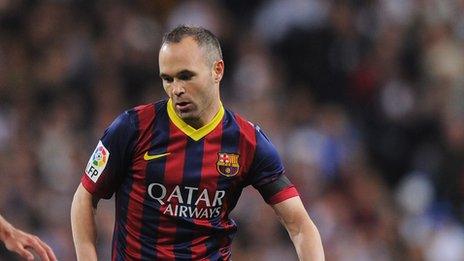
Barcelona is one of Nike's biggest club deals
'Strategic element'
Nike has lost two big English clubs this year.
After 20 years with the US firm, FA Cup winners Arsenal now get their kit from Puma, but it is Adidas's Manchester United deal that has grabbed the headlines.
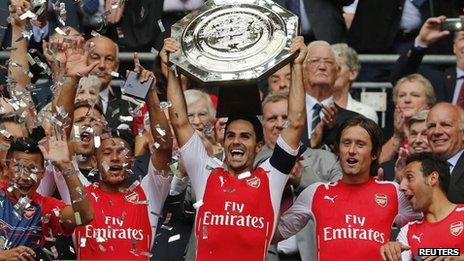
Arsenal's first season with Puma has already seen the club win some silverware
It is thought that the deal took about three years to negotiate. Adidas claims it will be able to generate sales of £1.5bn over the 10 years, but the agreement was signed at a time when the club had failed to qualify for the Champions League for the first time in 19 years.
Austin Houlihan, from the Sports Business Group at consultants Deloitte, thinks there are many benefits and it isn't just about the money sportswear firms can generate from selling shirts.
"There's also the strategic element of what benefit is it to us to associate with this particular club," Mr Houlihan explains.
"That's why you see different deals being put on the table and obviously with the case of Manchester United, why Nike walked away and Adidas came on board."
'Brand awareness'
However, Prof Chris Brady, director of the Centre for Sports Business at Salford University, believes that this type of deal makes sense for Adidas.
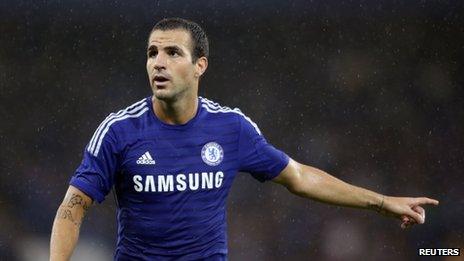
Experts say football is key to Adidas's business model
"The brand awareness of football is like no other," Prof Brady says. It is the global sport, so can raise the awareness of the brand enormously, he says.
He also believes that Adidas pays more than other brands because football is key to its business model and it is vital it is seen as the market leader in football across the world.
So, as the Premier League kicks off a new season on Saturday and the battle on the pitch intensifies, it seems the commercial one off it is also hotting up.